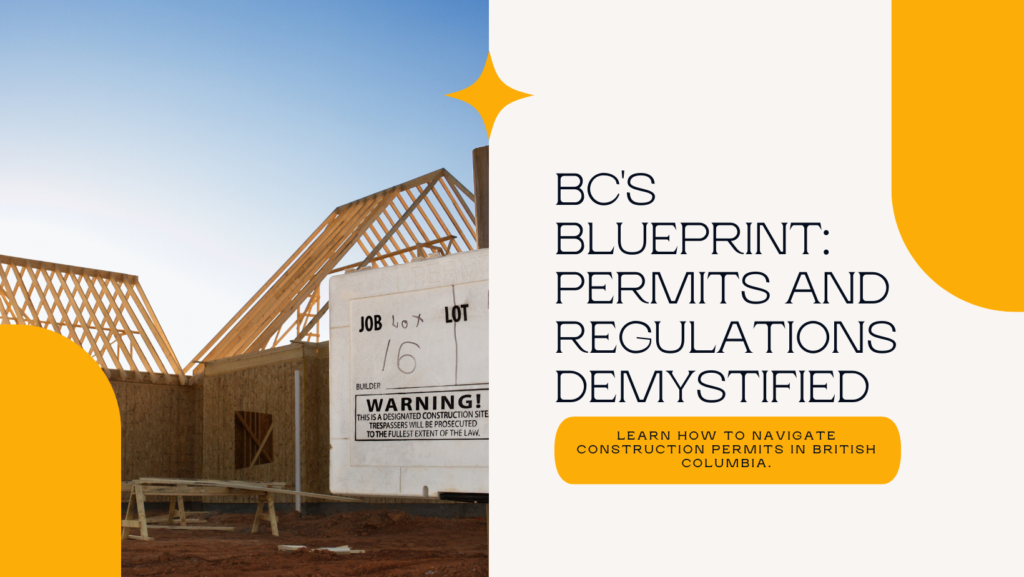
In an era where sustainability is more critical than ever, the construction industry in British Columbia (BC) is leading the way with innovative green building practices. By integrating eco-friendly construction methods, materials, and technologies, we can reduce environmental impact and create healthier, more efficient homes and buildings. This blog post explores the various sustainable construction practices in BC, local initiatives supporting green building, and the long-term benefits for both homeowners and the environment.
Eco-Friendly Construction Methods
Energy-Efficient Design
Energy-efficient design is a cornerstone of green building. By incorporating passive solar design, high-performance windows, and superior insulation, buildings can significantly reduce their energy consumption. In BC, where the climate varies widely, these design strategies ensure that homes stay warm in the winter and cool in the summer with minimal energy use.
Water Conservation
Water conservation is another critical aspect of sustainable construction. Techniques such as rainwater harvesting, low-flow fixtures, and drought-resistant landscaping help reduce water usage. Greywater recycling systems, which reuse water from sinks and showers for irrigation, are becoming increasingly popular in BC homes.
Waste Reduction
Reducing construction waste is essential for sustainability. This involves careful planning to use materials efficiently and recycling construction debris. Prefabrication, where building components are made off-site and assembled on-site, minimizes waste and improves precision.
Sustainable Materials
Recycled and Reclaimed Materials
Using recycled and reclaimed materials reduces the demand for new resources and decreases waste. Materials such as reclaimed wood, recycled steel, and recycled concrete not only lower environmental impact but also add unique character to buildings.
Sustainable Wood
BC is known for its vast forests, and using sustainably sourced wood from local suppliers supports both the environment and the economy. Certification programs like the Forest Stewardship Council (FSC) ensure that the wood comes from responsibly managed forests.
Low-VOC Materials
Indoor air quality is crucial for occupant health. Using low-volatile organic compound (VOC) paints, adhesives, and finishes minimizes the release of harmful chemicals, creating a healthier indoor environment.
Innovative Technologies
Solar Power
Solar panels are becoming a common sight on BC rooftops. They harness the abundant natural energy from the sun, reducing reliance on fossil fuels and lowering electricity bills. Net metering programs in BC allow homeowners to sell excess power back to the grid, providing an additional financial incentive.
Geothermal Heating and Cooling
Geothermal systems utilize the earth’s stable temperature to provide efficient heating and cooling. By circulating fluid through underground pipes, these systems can significantly reduce energy usage compared to traditional HVAC systems.
Smart Home Technology
Smart home technologies enhance energy efficiency and convenience. Smart thermostats, lighting, and appliances can be controlled remotely and programmed to optimize energy use, further reducing a home’s carbon footprint.
Local Initiatives and Incentives
BC Energy Step Code
The BC Energy Step Code is a voluntary provincial standard that provides a pathway to net-zero energy-ready buildings. It encourages builders to exceed the base building code requirements, improving energy efficiency and reducing greenhouse gas emissions.
Rebates and Grants
There are numerous rebates and grants available to support green building in BC. Programs like the CleanBC Better Homes and Home Renovation Rebate Program offer financial incentives for energy-efficient upgrades, such as insulation, heat pumps, and energy-efficient windows.
Municipal Initiatives
Many municipalities in BC have adopted green building policies and bylaws. For instance, the City of Vancouver’s Green Buildings Policy for Rezonings mandates that all rezoning projects meet stringent sustainability standards, promoting the construction of energy-efficient, low-carbon buildings.
Long-Term Benefits of Green Building
Cost Savings
Although the initial investment in green building practices may be higher, the long-term savings are substantial. Energy-efficient homes and buildings have lower utility bills, and sustainable materials often have longer lifespans, reducing maintenance and replacement costs.
Increased Property Value
Homes built with green building practices tend to have higher property values. Buyers are increasingly looking for energy-efficient, environmentally friendly homes, recognizing the long-term financial and health benefits they offer.
Environmental Impact
Green building practices significantly reduce the environmental footprint of construction. Lower energy consumption, reduced water usage, and minimized waste all contribute to a healthier planet. Sustainable construction helps combat climate change by reducing greenhouse gas emissions and conserving natural resources.
Healthier Living Environments
Green buildings provide healthier living environments. Improved indoor air quality, natural lighting, and non-toxic materials create spaces that promote physical and mental well-being for occupants.
British Columbia’s commitment to sustainability is evident in the growing adoption of green building practices. By embracing energy-efficient designs, sustainable materials, and innovative technologies, we can build homes and buildings that are not only better for the environment but also healthier and more cost-effective for homeowners. Local initiatives and incentives further support these efforts, making sustainable construction a smart choice for the future.
At SilverBeam Homes, we are dedicated to incorporating these green building practices into our projects, ensuring that our clients benefit from the best in sustainable construction. Whether you’re planning a new build or looking to upgrade your existing home, our team is here to help you achieve your sustainability goals. Contact us today to learn more about how we can assist you in building a greener, more sustainable future.
read more

Recent Comments